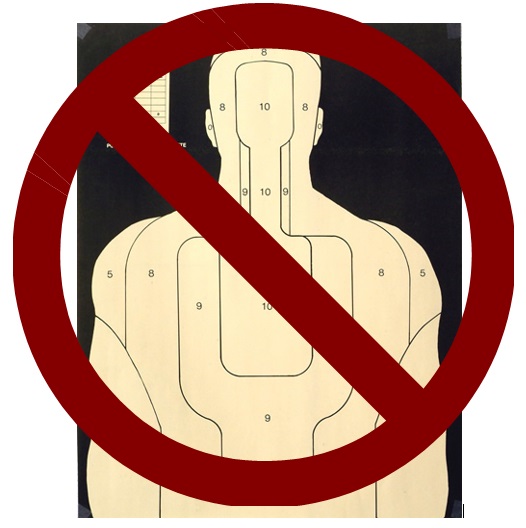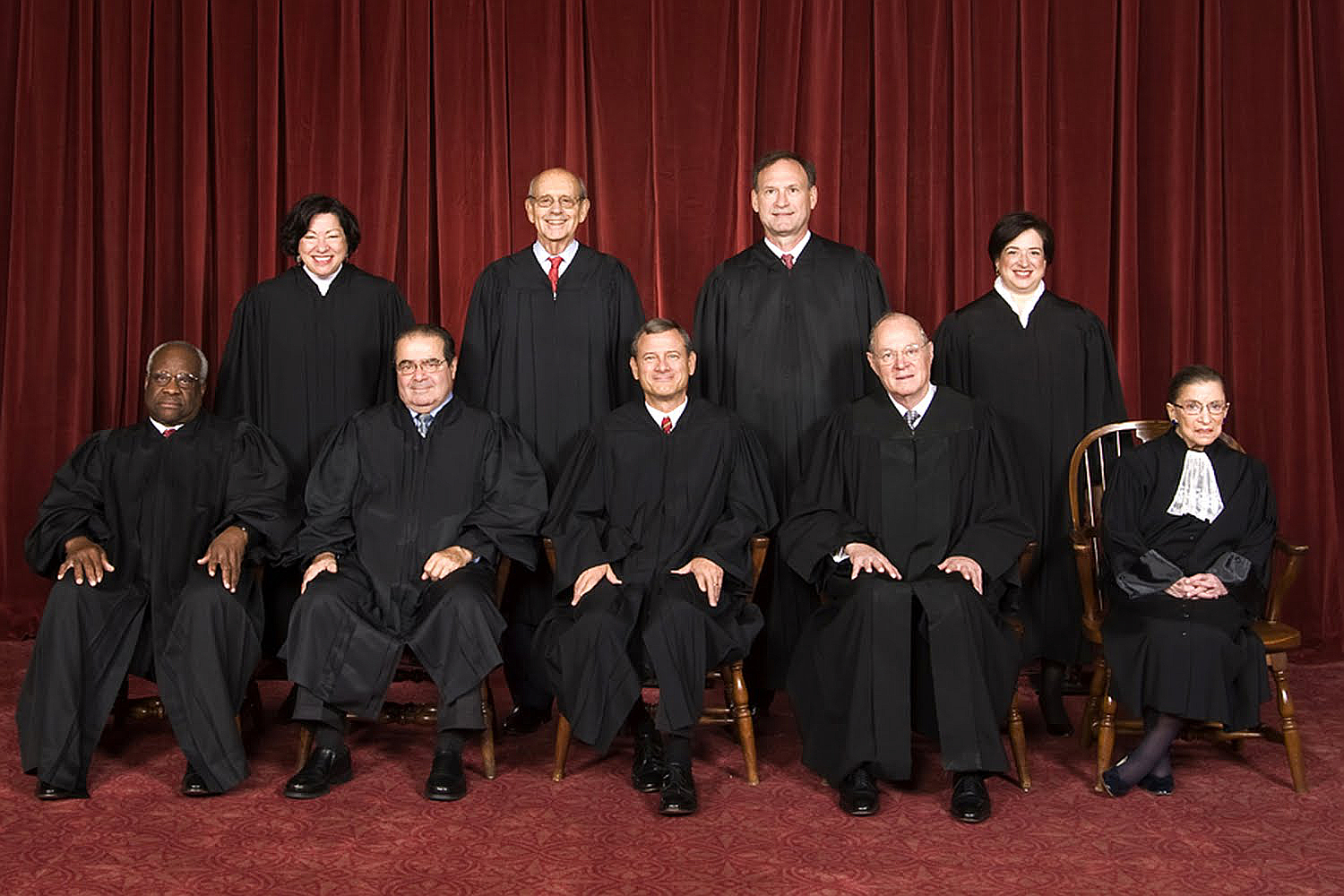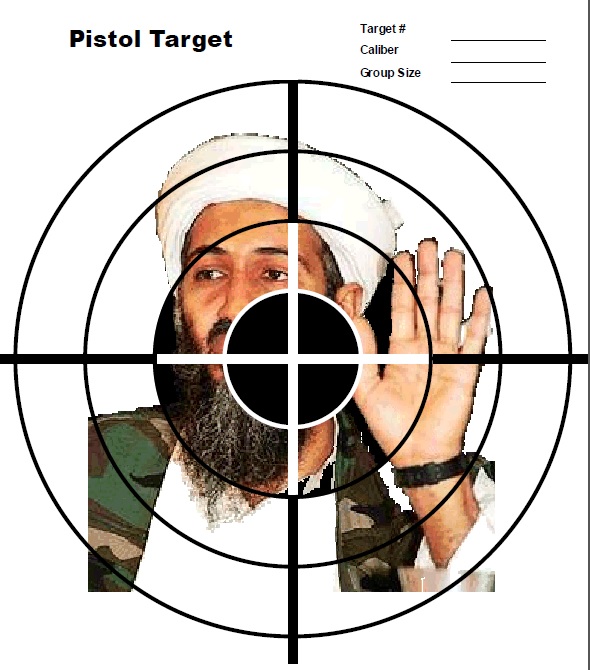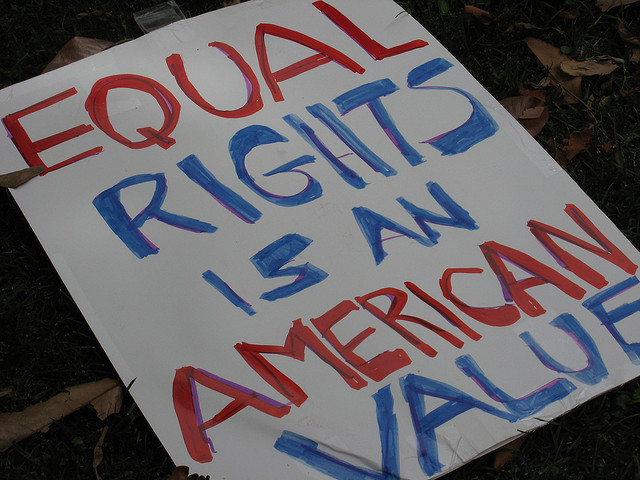
Original BT5W image retrieved from http://www.americantargetcompany.com/images/targets/law_enforcement/BT_5W_full.jpg on 1/16/2015.
On January 8, Pennsylvania Representative Thaddeus Kirkland (D- Delaware Co.) posted a memorandum regarding a bill he plans to introduce. The bill would “prohibit the use of targets that depict human silhouettes at shooting ranges across the Commonwealth.” He further suggests that shooters may substitute human silhouettes with those of “white-tailed deer, black bear, wild turkey, and elk.” The purpose? Representative Kirkland indicates that “allow[ing]individuals to practice their target shooting by shooting human silhouette targets at shooting ranges” effectively “perpetuate[s] violence.” The bill would, however, provide an exception for “law enforcement officers, military personnel or other public safety personnel in line with their official duties.”
One has to wonder what data, if any, he has to support his propositions that by eliminating target shooting where the targets depict human silhouettes at shooting ranges across the Commonwealth will reduce violence, but that would be for a epidemiological study. We are here to examine the legality of such a law as many of the USLS members have asked.

Representative Thaddeus Kirkland. Photo retrieved from http://www.legis.state.pa.us/cfdocs/legis/home/ member_information/house_bio.cfm?id=126 on 1/16/2015.
Many have questioned whether such a law would be constitutional. There are several arguments to be made, some with greater merit than others.
Personal preferences and bias aside, there seems to be a flaw with the fundamentals of this proposition. Overtly proposing the use of animal silhouettes in lieu of human silhouettes paints a distorted picture of the present state of the law. First, the Supreme Court of the United States has been clear that the 2nd Amendment guarantees citizens (less persons not to possess under federal or state laws) the right to bear arms for self-defense purposes, at the very least in the home. District of Columbia v. Heller, 554 U.S. 570 (2008).
The Pennsylvania Constitution provides an even stronger guarantee than the United States Constitution, reading “The right of the citizens to bear arms in defense of themselves and the State shall not be questioned.”
As we have discussed in our previous post, Open Carry in Philadelphia: Shall Not Be Questioned?, the Pennsylvania guarantee plainly applies to “the citizens,” makes no reference to militia, and specifically provides a purpose for this right in “defense of themselves and the State.” As a result, legally speaking the right to bear arms goes hand in hand with self-defense. Additionally, Pennsylvania law specifically provides for the justified use of deadly force under select circumstances [For more on this, check out our Justified series: Justified, Justified 2, Justified 3].
Regardless of one’s personal ideological views, the state of the law is clear. The United States and Pennsylvania Constitutions, as well as the state legislature, have recognized that firearms hold a valid purpose through the use of force in self-defense. Each have further recognized the citizens’ right to the same.
To suggest that the ability to hunt is a more legitimate purpose for the use of firearms is simply erroneous given the state of the law. At the outset, neither the United States nor the Pennsylvania Constitution mention hunting. Furthermore, the Pennsylvania Game and Wildlife Code (Title 34) provides numerous legal restrictions related to hunting that do not apply to self-defense. These restrictions are vast, and far too extensive to discuss in full. However, some restrictions cover when an individual may hunt, where an individual may hunt, what type of animal an individual may take and how many animals an individual may take. Albeit not completely aligned with the laws of justified deadly force, it is certainly safe to say that shooting an animal is only lawful provided select facts and circumstances. Could the use of the animal targets addressed in the memorandum promote hunting out of season? Or on forbidden lands? Or with forbidden weapons? Keep in mind that a significant amount of Penn LAGOs use semiautomatic handguns at the firing range. Hunting with a semiautomatic “pistol” is generally forbidden under 34 Pa.C.S. § 2308 (an exception exists for certain disabled persons).

Retrieved from http://upload.wikimedia.org/wikipedia/commons/4/43/Supreme_Court_US_2010.jpg on 1/16/2015.
All above being considered, “that makes no sense” is not usually the strongest of legal arguments. The rights afforded by the Bill of Rights apply to the states through the due process clause of the 14th Amendment. Penn LAGOs further have the Pennsylvania Constitution at their disposal. So is there a viable constitutional claim?
2nd Amendment & Article I Section 21
What does it take to violate the 2nd Amendment? Strictly based upon Supreme Court authority, we have not been provided with much. We know from Heller that a complete prohibition on functional firearms in the home for self-defense violates the guarantee. District of Columbia v. Heller, 554 U.S. 570 (2008). However, the Court was very clear that “the right secured by the Second Amendment is not unlimited.” Id. at 626. The Superior Court of Pennsylvania has adopted the same approach with regards to Article I Section 21. Com. v. McKown, 2013 PA Super 282, 79 A.3d 678, 689 (2013) appeal denied, 91 A.3d 162 (Pa. 2014). Whether or not we agree with that perspective is largely irrelevant, because our evaluation is based on what the law is, rather than what we believe it ought to be.
The Pennsylvania Superior Court has used a two part test in evaluating whether a law may stand under Article I Section 21. The first inquiry examines the law at issue and whether it burdens conduct protected by Article I Section 21. While the U.S. Supreme Court has declined to affix a level of scrutiny for evaluation of the Second Amendment, the Pennsylvania Superior Court has used intermediate scrutiny with respect to Article I Section 21.

Retrieved from http://waitbutwhy.com/wp-content/uploads/2014/10/slow-motion-watermelon.gif on 1/16/2015.
It is important to draw the connection between human silhouette targets and the use of arms for self-defense purposes. One would presume that in using a firearm for self-defense purposes, the overwhelming majority of the time, it is used against another human being. It would follow that using a human silhouette target could help aptly prepare an individual to use a firearm for the purpose of self-defense.
Does that mean the inability to use a human silhouette target effectively denies the citizens’ right to possess and use firearms for self-defense purposes? Although we have been unable to find definitive scientific research related to the use of human silhouette targets, perhaps a legitimate study would illustrate the connection to a greater degree of certainty. (See SFGate’s THE SCIENCE OF CREATING KILLERS for a brief discussion).
If conduct is determined to fall within the scope of Article I Section 21, the court will evaluate the law under intermediate scrutiny. A law which impedes the freedoms granted in Article I Section 21 must be substantially related to the furthering of an important government interest in order to stand. As the Commonwealth holds a general police power for the “public health, safety and morals” of the people, the “government interest” portion is usually easier to prove at the state level. While the proposed law might seek to serve this purpose, under intermediate scrutiny, the means used must be “substantially related” to the end. Is the ban of human silhouette targets likely to increase the function of public health, safety and morals? We can find no evidentiary link between those who commit unlawful acts of gun violence and those who use human silhouettes at shooting ranges. We would most certainly welcome any evidence that we have missed.
Provided the indirect relationship between human silhouette targets and the right to bear arms, a Constitutional challenge would be no slam dunk. At the same time, provided the speculative relationship between the ban and a legitimate effect on the people, a challenge on those grounds would by no means be inconceivable.
First Amendment
We hear a great deal about the First Amendment in the media, but rarely with respect to firearms. Commonly referred to as “freedom of speech,” some may be wondering how this could possibly be relevant. The First Amendment applies not only to speech, but expressive conduct as well. If the expressive conduct is communicative in nature, it could potentially fall under the protections afforded by the First Amendment.
If “‘speech’ and ‘nonspeech’ elements are combined in the same course of conduct, a sufficiently important governmental interest in regulating the nonspeech element can justify incidental limitations on First Amendment freedoms,” Texas v. Johnson, 491 U.S. 397, 407 (1989) quoting United States v. O’Brien, 88 S. Ct. 1673, 1678 (1968). A limitation on expressive conduct will only be permitted “if it furthers an important or substantial governmental interest; if the governmental interest is unrelated to the suppression of free expression; and if the incidental restriction on alleged First Amendment freedoms is no greater than is essential to the furtherance of that interest.” O’Brien at 1679.
In O’Brien, however, the Court found that the burning of draft cards was “in no respect inevitably or necessarily expressive,” and that the law preventing such was ultimately constitutional.
On the contrary, in Texas v. Johnson, the Court found that flag burning did constitute expressive conduct. Furthermore, it found that the law prohibiting flag burning suppressed expressive conduct. The law was subject to strict scrutiny, and could not pass constitutional muster.
While shooting a human silhouette target is not always expressive conduct, it most certainly can be expressive conduct. Some individuals responded to the tragedies of September 11, 2001 by shooting Bin Laden targets. We’ve all seen an NFC East fan burn a dummy dressed in a rival team’s uniform. Would shooting a human silhouette be any different? Under certain circumstances, perhaps not.

Retrieved from http://www.gun-shots.net/wp-content/uploads/2011/09/ binladen_pistol_target.pdf on 1/16/2015.

This photo may have been taken during the 86-year Red Sox World Series drought. Retrieved from http://www.americantargetcompany.com/ AT_Q_target.asp on 1/16/2015.

Expressive conduct. Retrieved from http://nflredskins.files.wordpress.com/2010/09/ img20100912175908.jpg on 1/16/2015.
It can be argued that the proposed law does not specifically target expressive conduct. The law is not seemingly in place to solidify a political principle or to suppress a particular message. However, it can undoubtedly have such an effect. Additionally, as discussed above, the governmental interest is not necessarily as strong as that involved in the prevention of draft card destruction. It is not entirely clear how closely related this prohibition is to the government’s purported purpose.
Even if such target practice is not covered under the First Amendment, it might still be protected under the Pennsylvania Constitution. In at least one instance, the Pennsylvania Supreme Court has found that particular expressive conduct was protected by the Pennsylvania Constitution beyond the protections afforded by the United States Supreme Court and the First Amendment. Pap’s A.M. v. City of Erie, 571 Pa. 375, 812 A.2d 591 (2002).
Equal Protection
The proposed bill provides an exception for “law enforcement officers, military personnel or other public safety personnel in line with their official duties.” We have been asked whether this will fall victim to the Equal Protection Clause of the 14th Amendment. After all, the basic function of the 14th Amendment is to ensure that citizens are treated fairly and equally under the law. This Constitutional Amendment has been the basis for some of the United States’ most prolific civil rights causes of action. Is the lone exception discriminatory?

Retrieved from http://static.squarespace.com/static/5172aa40e4b08db7106f8212/t/51858f1de4b07f4d5518d10a/1367707422371/equal-rights_stevebott.jpg on 1/16/2015.
The problem is that the Court has held that the 14th Amendment requires different levels of scrutiny for different discriminatory classifications. In order to violate the 14th Amendment, a law must be discriminatory on its face, or discriminatory as applied. We must additionally determine whether the law affects a suspect class.
If a law is discriminatory on its face toward a suspect class, the government must prove that the law is necessary to achieve a compelling government interest.
Other “quasi-suspect” classes are evaluated under intermediate scrutiny. However, the Court has been hesitant to deem a classification suspect. While classifications based on traits such as race, national origin and gender have been entitled to heightened scrutiny, a distinction between law enforcement, military personnel, and civilians has never been classified as suspect.
As a result, the discriminatory law would generally be subject to a rational basis review. The rational basis review is extremely easy for the government to overcome, as it requires the challenger to prove that that the law is not rationally related to any legitimate government interest. In this instance, the government would likely claim that the ban is rationally related to “putting an end to the perpetuation of violence” or “decreasing unlawful gun violence.” While it may seem like the ban has no rational relationship to either of these goals to many people, in practice, it is extremely rare for the Court to find that the challenger has met this burden.
Even absent a suspect class, the Equal Protection Clause can afford heightened scrutiny when a law burdens a fundamental right. However, in order for this analysis to apply, the court must find that the rights being burdened fall within the scope of the Second Amendment. Given the Court’s previous analyses, it is by no means certain that the Court will conclude that the proposed ban burdens the fundamental freedoms afforded by the Second Amendment.
Conclusion
As you can see, there are arguments to be made as to the constitutionality of the proposed human silhouette ban. One issue seems to be that the use of human silhouette targets does not neatly fit within the rights afforded by the Second Amendment or Article I, Section 21 (at least as the courts have interpreted each, respectively).
However, some kind of reasonable relationship undoubtedly exists between the use of human silhouette targets and the right to bear arms in self-defense. Similarly, while there may not be compelling evidence in support of Kirkland’s purported motive for the ban as we can find in published studies; however, there is a possibility that the government will only need some faint, conceivable rational relationship to survive a constitutional claim. Would such a bill meet that low burden?
